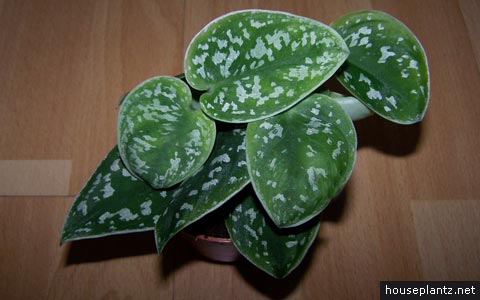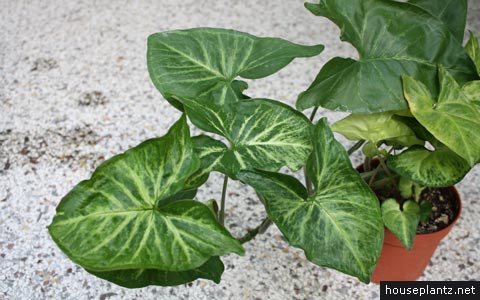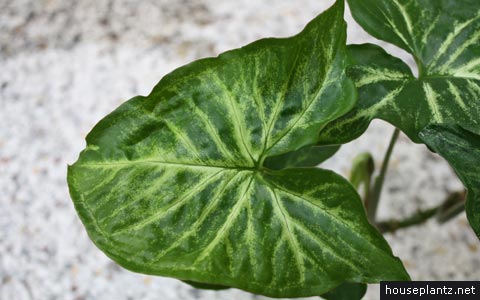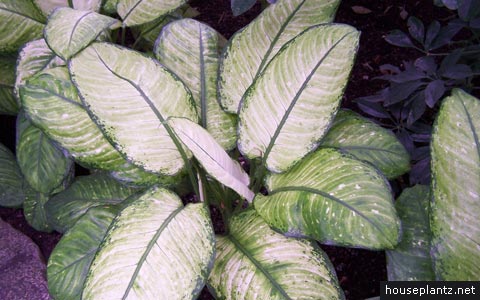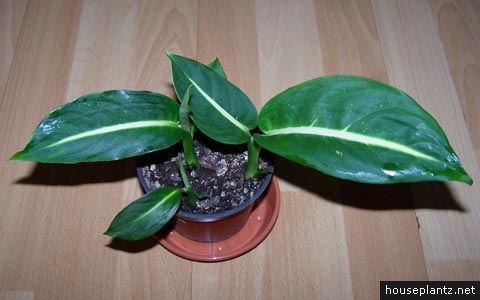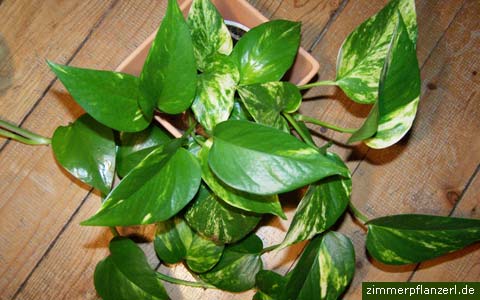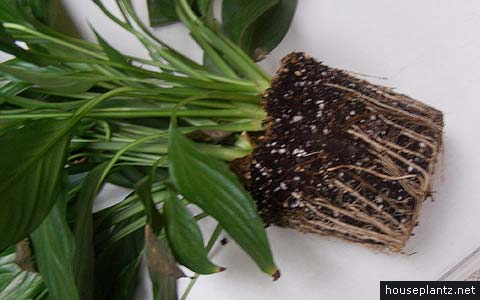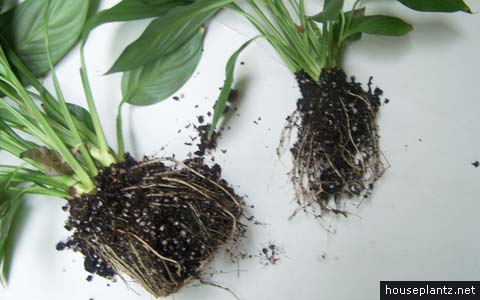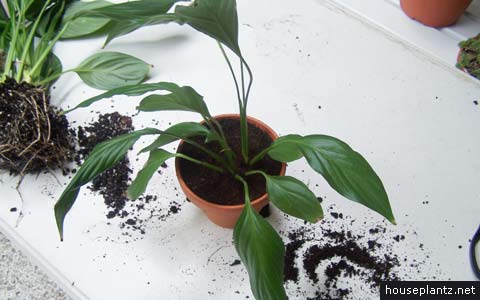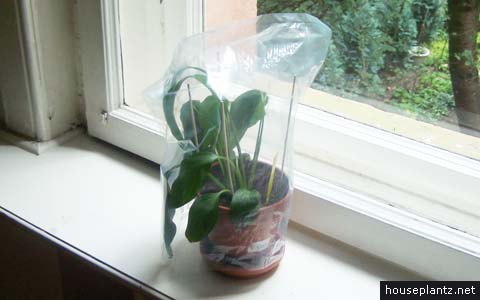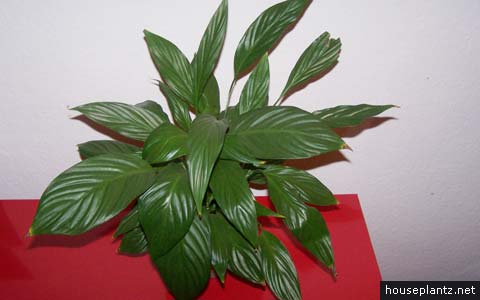Arrowhead plant, arrowhead vine, goosefoot plant
The natural range of the arrowhead plant (Syngonium podophyllum) extends from Mexico to Brazil. A member of the arum family, it is a popular garden plant in tropical and subtropical regions. It is also a popular houseplant in cooler climates.
Besides the Syngonium podophyllum “Neon Robusta” shown here, there are many other cultivars available. With white-green, yellow-green, reddish, mottled or spotted leaves.
The arrowhead plant is a climber, its shoots can reach several meters in length.

How to care for Syngonium podophyllum “Neon Robusta”
Lighting & temperature
Semi-shady to partially sunny locations with morning sun, late evening sun and winter sun are welcome. Syngonium podophyllum “Neon Robusta” can spend the midsummer weeks in a semi-shady spot in the garden or on the balcony.

The arrowhead plant copes well with room temperature all year round, but should not be exposed to temperatures below 59 °F (15 °C) for long periods in winter. Overwintering at 59 to 68 °F (15 to 20 °C) is possible.
Watering & soil
The root ball should always be slightly moist but not dripping wet.
It may dry on the surface. If water is occasionally left in the saucer or planter for a few hours, this is not a problem. Prolonged drying out of the soil will lead to brown leaf edges.
The arrowhead plant has no special requirements for its soil. It grows well in mixtures for indoor plants or other container plants, herbs and vegetables.
Can the arrowhead plant be grown in water?

The arrowhead plant is not an aquatic plant, it cannot survive submerged, i.e. if all parts of the plant are under water. However, it can be kept well in a glass of water for some time. I cannot yet say how long it will survive this form of cultivation. I had the closely related Monstera delciosa in a small aquarium for several years.
Feeding
Syngonium podophyllum “Neon Robusta” does not need to be fed in the first year after purchase or repotting.
After that, it can be given liquid fertilizer occasionally from spring to fall. Or slow-release fertilizer such as sticks, granules or pellets in spring and/or summer.


